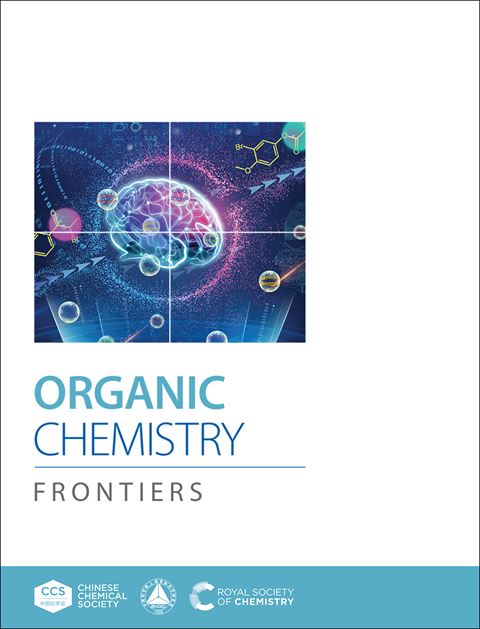Cobalt-Catalyzed Enantioselective Radical Hydroamination of Alkenes with N-Fluorobenzenesulfonimides: Theoretical Insight of Enantio-Determining SN2-like Reductive Elimination
IF 4.6
1区 化学
Q1 CHEMISTRY, ORGANIC
引用次数: 0
Abstract
The cobalt-catalyzed enantioselective radical hydroamination of alkenes with N-fluorobenzenesulfonimides has been systematically investigated using density functional theory (DFT) calculations. The favorable reaction mechanism consists of six key processes: halogen atom transfer (XAT), N-centered radical addition, transmetalation, hydrogen atom transfer (HAT), C-centered radical addition, and SN2-like reductive elimination. The HAT process is the step that determines regioselectivity. The SN2-like reductive elimination serves as both the enantio-determining step and the rate-determining step of the catalytic cycle. Additionally, the origins of regioselectivity and enantioselectivity have been analyzed from the perspectives of distortion and interaction. This theoretical study offers valuable insights into the activity and selectivity of cobalt-catalyzed enantioselective radical hydroamination at both molecular and atomic levels, aiding the development of asymmetric synthesis.钴催化烯烃与n -氟苯磺酰亚胺的对映选择性自由基氢胺化:对映决定sn2样还原消除的理论见解
用密度泛函理论(DFT)计算系统地研究了钴催化烯烃与n -氟苯磺酰亚胺的对映选择性自由基加氢胺化反应。有利反应机理包括六个关键过程:卤素原子转移(XAT)、n中心自由基加成、金属转化、氢原子转移(HAT)、c中心自由基加成和sn2类还原消除。HAT过程是决定区域选择性的步骤。类sn2还原消除既是催化循环的对映体决定步骤,也是催化循环的速率决定步骤。此外,还从扭曲和相互作用的角度分析了区域选择性和对映体选择性的成因。该理论研究在分子和原子水平上对钴催化的对对选择性自由基氢胺化反应的活性和选择性提供了有价值的见解,有助于不对称合成的发展。
本文章由计算机程序翻译,如有差异,请以英文原文为准。
求助全文
约1分钟内获得全文
求助全文
来源期刊

Organic Chemistry Frontiers
CHEMISTRY, ORGANIC-
CiteScore
7.90
自引率
11.10%
发文量
686
审稿时长
1 months
期刊介绍:
Organic Chemistry Frontiers is an esteemed journal that publishes high-quality research across the field of organic chemistry. It places a significant emphasis on studies that contribute substantially to the field by introducing new or significantly improved protocols and methodologies. The journal covers a wide array of topics which include, but are not limited to, organic synthesis, the development of synthetic methodologies, catalysis, natural products, functional organic materials, supramolecular and macromolecular chemistry, as well as physical and computational organic chemistry.
 求助内容:
求助内容: 应助结果提醒方式:
应助结果提醒方式:


